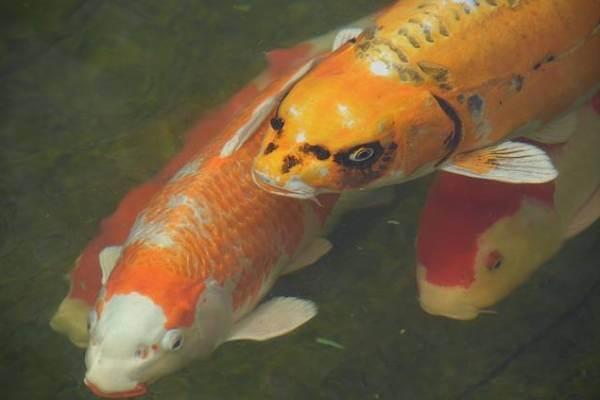What can you do to help your local environment?

Ponds are great for the environment. They provide a healthy water source for a wide range of animals; wildlife can find sanctuary around your pond to drink, settle down or reproduce, and ponds have loads of great benefits for the environment. So, what can you do to help your local environment? Well, there could be a few things.
Provide Slopes around your Pond (Useful Blogs: Pond Building Guide)
Be sure to provide gentle slopes and shallow sections of water so wildlife can visit the pond. Insects may land on this shallow section to rest, drink, and eat small organisms (algae and other insects), reptiles and amphibians will find it easier to enter and exit, waterfowl (ducks, swans etc) may use it to get in and out of the pond and birds will use it for bathing, drinking, and searching for food.
To prevent wildlife from attacking any livestock in the pond, you can build in a shelf or a very quick drop off to allow your fish to escape to the deeper parts of the pond for safety. You can use a cover net or pest deterrent to protect your fish against certain wildlife (like Herons); provided there is an access point for most wildlife.
.jpg)
Creating different habitats around your pond with plants and substrates will attract different species of animals. In short, this may include having a section of the pond that is deeper, another section that is shallower, an area with more vegetation or a small area with a waterfall. On the outside of your pond, microhabitats can include a grassy area, an area that includes a tree and long grass, or a section with shrubs and flowers. These microhabitats are suitable for different wildlife and will encourage greater diversity. But creating different sections for plant life will allow your pond to suck in more carbon, which reduces your carbon footprint!
Incorporate Native Plants (Useful Blogs: Pond Plants, 5 Benefits of Pond Plants)
Make sure to incorporate plenty of native plants, shrubs, and trees around a pond to provide shelter and nesting for animals. Diverse plant life can provide shelter, food and shade which draws in wildlife and enhances your ponds beauty and environment. By drawing in wildlife, your pond develops a balanced ecosystem; but the plants can also filter out pollutants and nutrients that may adversely affect your pond!
It’s best to focus on planting native plants, as non-native plants may outcompete other plants and spread too quickly. If you do have any non-native or invasive plants, you should try to get rid of these as quickly as possible to prevent them from damaging the local environment or from unsettling the environmental balance. You can find a list of our available plants here.
Use Solar Products (Useful Blogs: Top 5 Benefits of Solar Products)
Solar products are great for the environment and for your pond. They generate their own electricity (meaning you're not using electricity from fossil fuels and there's no running costs!) and they require very little maintenance. Solar products may include a battery back up and a charging adaptor; meaning they can operate in dark or in cloudy conditions. You can find a list of our solar products here.
Please note that solar equipment is not suitable for ponds with fish (especially Koi) and you will need a mains powered pump and filter system to keep these ponds clean for your fish.

If you ever buy new electrical equipment, your probably going to have other equipment that has stopped working or needs replacing. Please don't just bin it! Unwanted electrical equipment is the UK's fastest growing type of waste and many of these items can be salvaged and the parts reused in other equipment.
You can search for your nearest recycling centre via the Recycle Now website.
Be Conscious of the Fish in Your Pond
Be cautious of the fish you keep, as some species, such as orfe, are known to escape and can become invasive to surrounding waters. Some fish can escape your pond and breed rapidly in another location, which can destroy habitants and environments. We have heard reports of people offloading unwanted goldfish into public bodies of water in local forests which then dominate the environment; reducing diversity and causing other problems. Please do not offload unwanted fish into ponds; contact a local aquarium or pond establishment who may be able to take them in or they may be able to find a quick resolution for you.
.jpg)
Avoid using fertilizers around the pond, as these can leak into the pond and create problems with the ecosystem. While fertilizers can stimulate plant growth, the chemicals can cause more harm than good; for example, fertilizers can lead to algae blooms and fish deaths.
An easy fertilizer to use is pond water. If your pond has fish in it, they will create sludge at the bottom of the pond; sludge is just a mass of decaying organic debris that is high in nitrates; which is a really, really good plant fertiliser!
Limit Chemical Use (Useful Blogs: Pond Problems)
Aerators, such as fountains and waterfalls, can help limit the need for chemicals by controlling the growth of algae. But you may need a chemical treatment to treat certain pond problems. Our advice is to try to prevent the problem using natural methods and use chemical treatments sparingly (i.e. to treat your volume of pond once). Try to avoid using chemical treatments as a preventative measure, this can cause more problems that it fixes!
If you have any queries, please email us on info@pondkeeper.co.uk.